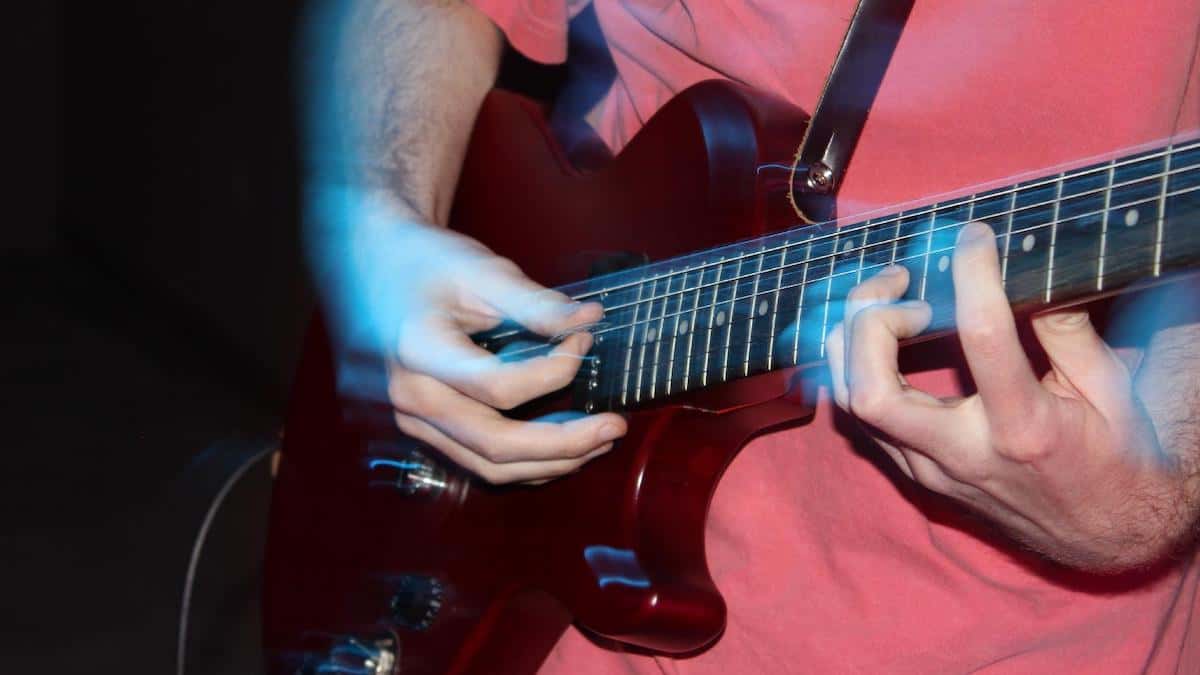Jazz Guitar Lessons
Understanding Harmony on the Guitar

In this JGT lesson, jazz guitarist Leon Rodriguez explains harmony on the guitar in this music theory lesson specifically for guitarists.
The interval pattern of a whole step, whole step, half step together makes up a tetrachord. Two tetrachords connected by a whole step makes a Diatonic Major Scale. Let’s build the harmony of the C major scale which has a key signature of no accidentals (sharps and flats) i.e. the black keys of a keyboard. The key of C major is all-natural notes as is our fretboard diagram, i.e. the white keys of the piano.
In the following 2 bars, we layout a major scale on the 2nd string recognizing a C tetrachord in the first measure and a G tetrachord in the second measure. Together, they make up the first and second halves of a C Major scale; a key to understanding the mechanics of the Cycle of 4ths and 5ths yet to come.
Play the next two bars, thinking, saying
Our selections have paired ‘Do’ the C and ‘mi’ the E skipping over ‘Re’ the D. This is an interval of a 3rd. There are two types of 3rds, a major third, (4 semitones or frets), and a minor 3rd, (3 semitones or frets). The semitone differences between the 3rd and 4th notes in the tetrachords will naturally distance the 3rds in the harmony.
Now we hit the “aha!” moment when we understand that we can only play one note at a time on a string. Fortunately, we laid out our major scale on the second string. We will place our harmony note on the first string. Being guitarists, we’re two dimensional we can expand vertically! I call that green line a unison line. (lot more on that later)

The 3rd note, the E (green) in the C Major scale is the same note as the open note of the first string. A unison. We advance down the key, pairing notes of the 2 strings. The distance between C and E is a Major 3rd (4 frets) a 1 fret difference than between D and F, a minor 3rd (3 frets).
How the half step intervals from the tetrachords are distributed gives us predictable and therefore functional two-part harmonies. Next, we have paired ‘re’ the D and ‘fa’ the F skipping over the ‘mi’. Continue this pattern advancing up the scale until we complete the ‘pairing’ when ‘do’ and ‘mi’ are finally paired an octave higher.
Once the ‘Pairings” have completed, each note in the scale has a harmony note an interval of a third between the notes on the second string and the notes on the first string. An interval is not the notes themselves but the space between the notes, like a distance. It takes two notes to have one interval. The natural half steps between the 3rd and 4th notes in the tetrachords determine if the 3rd will be a major 3rd or a minor 3rd. The results of this natural ‘distribution’ of half steps
The major 3rd has a fret range of 2 frets while the minor 3rd has a fret range of 3 frets. The pattern that is naturally formed by the half steps in the tetrachords

Each degree has a function; hence it has a name within the key. This set of terms becomes our language.

To be continued…Books and On-Line Private Lessons available at www.LeonRodriguezGuitar.com/shop
-
Jazz Guitar Lessons2 weeks ago
New JGT Guitar Lesson: Analyzing “Without A Song”
-
Jazz Guitar Lessons4 weeks ago
New JGT Guitar Lesson: Considering “Falling Grace”
-
Artist Features1 week ago
New Kurt Rosenwinkel JGT Video Podcast – July 2024
-
Artist Features3 weeks ago
JGT Talks To Seattle’s Michael Eskenazi






















